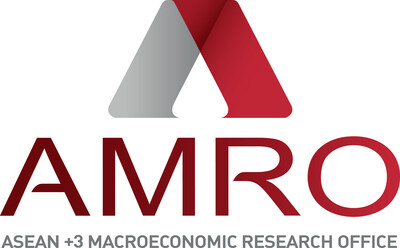KANAZAWA, Japan, Dec. 5, 2023 /PRNewswire/ — The ASEAN+3 Macroeconomic Research Office (AMRO) today unveiled its inaugural ASEAN+3 Financial Stability Report (AFSR 2023) during the 2nd ASEAN+3 Economic Cooperation and Financial Stability Forum. The AFSR 2023—AMRO’s second flagship report—is the ASEAN+3 region’s pioneering financial stability report. It delves into conjunctural market developments and potential risks in the ASEAN+3 region and provides an in-depth and thematic analysis of the impact of high debt on financial stability.
ASEAN+3 financial systems have demonstrated resilience on multiple trials over the past years, fortified by strong macroeconomic fundamentals, enhanced regulatory regimes and external buffers since the Asian Financial Crisis. Nonetheless, the ASEAN+3 economies are facing heightened uncertainties and volatilities in a rapidly changing and increasingly complex financial environment. Spillovers and contagion risks also intensify as global and regional integration deepens.
“Given the swiftly evolving global financial landscape and its substantial reverberations on the region, the significance of financial surveillance in ASEAN+3 cannot be overstated,” said AMRO Chief Economist Hoe Ee Khor.
Among the risks faced by the region, the potential resurgence of inflation is perhaps the one risk that has raised the greatest concern because of its implication for even higher and more prolonged interest rates and their impact on the economies and financial systems. Financial market volatility may spike as it adjusts to the new normal of a “higher-for-longer” interest rate environment with receding liquidity. Lingering concerns involve potential spillovers to regional economies during stress episodes, due to the existing vulnerabilities in the US banking sector, where key banking sector stocks have lost more than 10 percent of their value since the US regional banking stress in March 2023. Despite ample US dollar liquidity globally, US dollar stress may emerge if investor confidence falters amid tighter global monetary policy and heightened market volatility.
“Furthermore, accelerated cross-border capital flows, driven by greater financial market integration and digitalization, can rapidly transmit shocks, creating new challenges for policymakers,” added Dr. Khor.
Thematic studies in AFSR 2023 provide an in-depth analysis of financial stability risks from elevated debt levels in ASEAN+3, which reached 300 percent of the region’s GDP at the end of 2022. The low-for-long interest rate environment that existed before the recent global rise in inflation facilitated substantial debt accumulation by businesses, households, and governments. Monetary and fiscal stimulus measures implemented during the pandemic further contributed to the rise in debt-to-GDP ratios. The increased debt stocks and rising debt servicing costs in the current high interest rate environment have increased risks to financial stability, especially as pandemic support measures have been or are still being phased out.
A correction in house prices and escalating debt burdens due to higher interest rates or a recession may heighten the risk of defaults, particularly for highly leveraged households. Companies with weakened balance sheets may encounter challenges in refinancing and meeting interest expenses. Governments with elevated debt-to-GDP may face increased refinancing costs and rollover risk on maturing debt. The resilience of some banks and non-bank financial intermediaries, acting as debt intermediaries and creditors, may be tested, potentially exacerbating vulnerabilities in the financial market.
In response to rising non-financial private debt and systemic risks, policymakers can deploy macroprudential tools to curb risks from high household and corporate debt and excessive property developer leverage. For corporate debt, more responsible corporate lending practices can be encouraged, including by fostering better governance framework and mitigating credit risks of small-medium enterprises with credit guarantee schemes. To mitigate financial stability risks associated with high public debt, strategies should include medium-term fiscal consolidation, maintaining a sound debt structure, and diversifying the investor base.
“In addressing the risks posed by the higher debt levels amid tighter monetary conditions, authorities need to strengthen their defenses through a well-balanced policy mix across monetary, fiscal, and macroprudential policies. Close cooperation across jurisdictions is also essential,” emphasized Dr. Khor.
More details can be found in AMRO’s latest flagship report, the ASEAN+3 Financial Stability Report 2023.
About AMRO
The ASEAN+3 Macroeconomic Research Office (AMRO) is an international organization established to contribute toward securing macroeconomic and financial resilience and stability of the ASEAN+3 region, comprising 10 members of the Association of Southeast Asian Nations (ASEAN) and China; Hong Kong, China; Japan; and Korea. AMRO’s mandate is to conduct macroeconomic surveillance, support regional financial arrangements, and provide technical assistance to the members. In addition, AMRO also serves as a regional knowledge hub and provides support to ASEAN+3 financial cooperation.
Visit our website and follow us on LinkedIn for more updates.
![]() View original content to download multimedia:https://www.prnewswire.com/news-releases/navigating-high-debt-in-low-visibility-in-asean3-302005682.html
View original content to download multimedia:https://www.prnewswire.com/news-releases/navigating-high-debt-in-low-visibility-in-asean3-302005682.html
SOURCE ASEAN+3 Macroeconomic Research Office (AMRO)

Featured image: Megapixl © Chernetskaya








